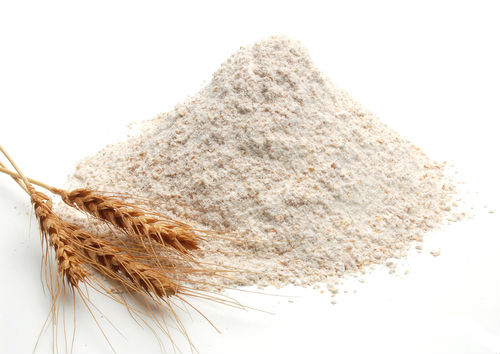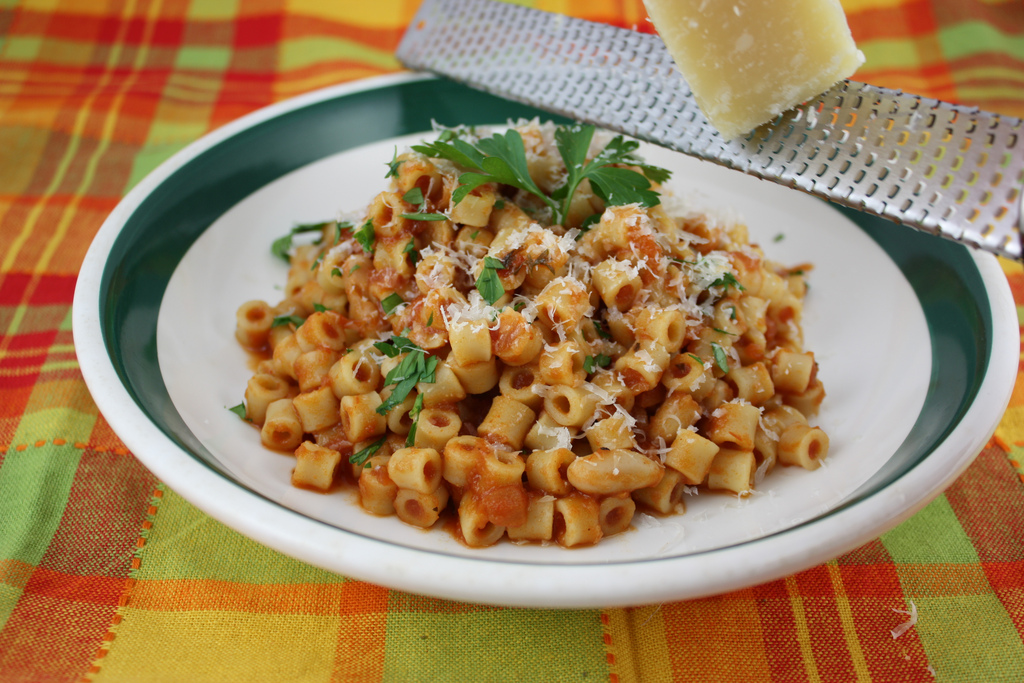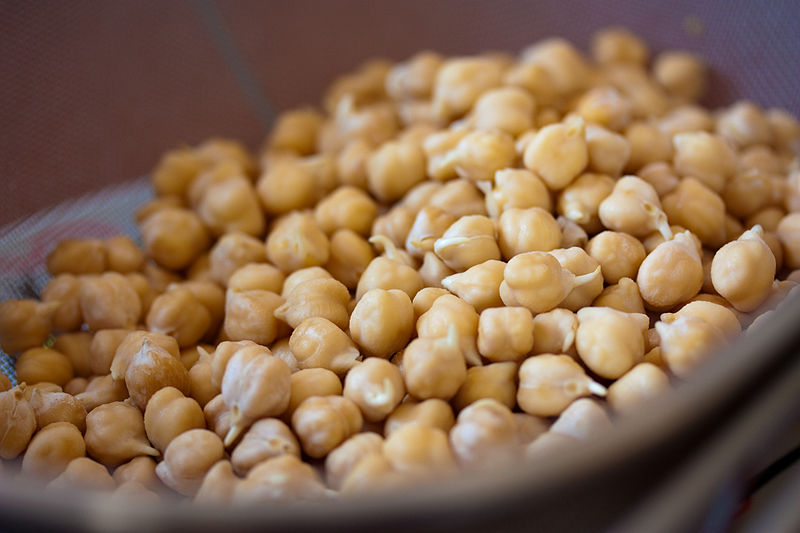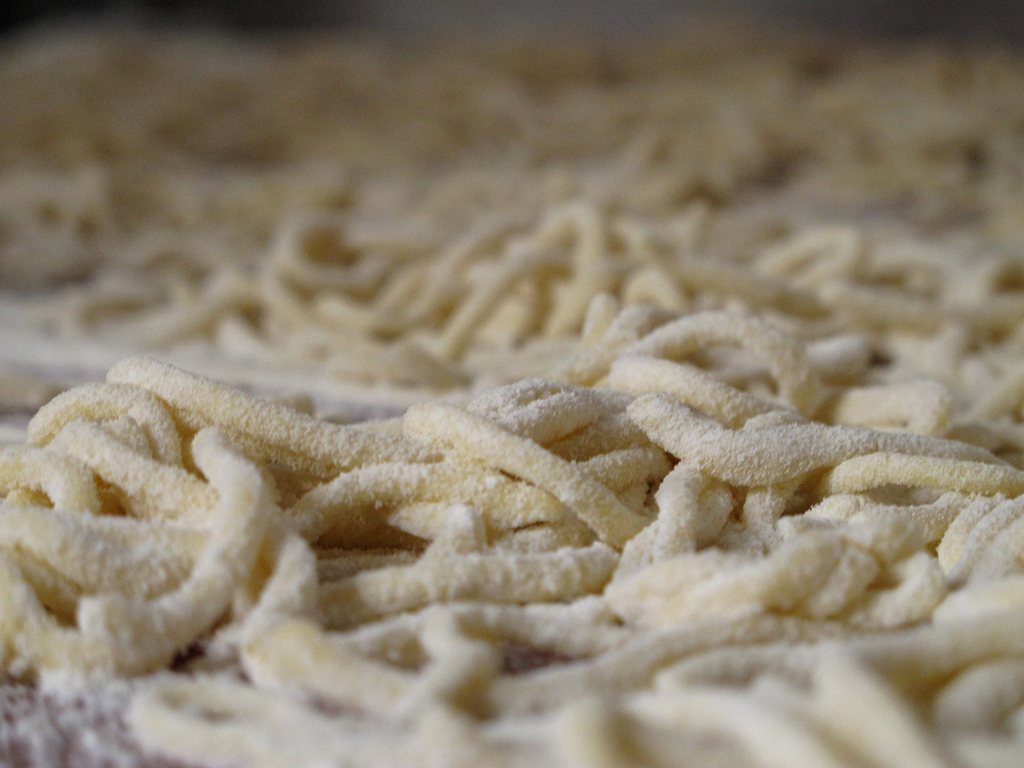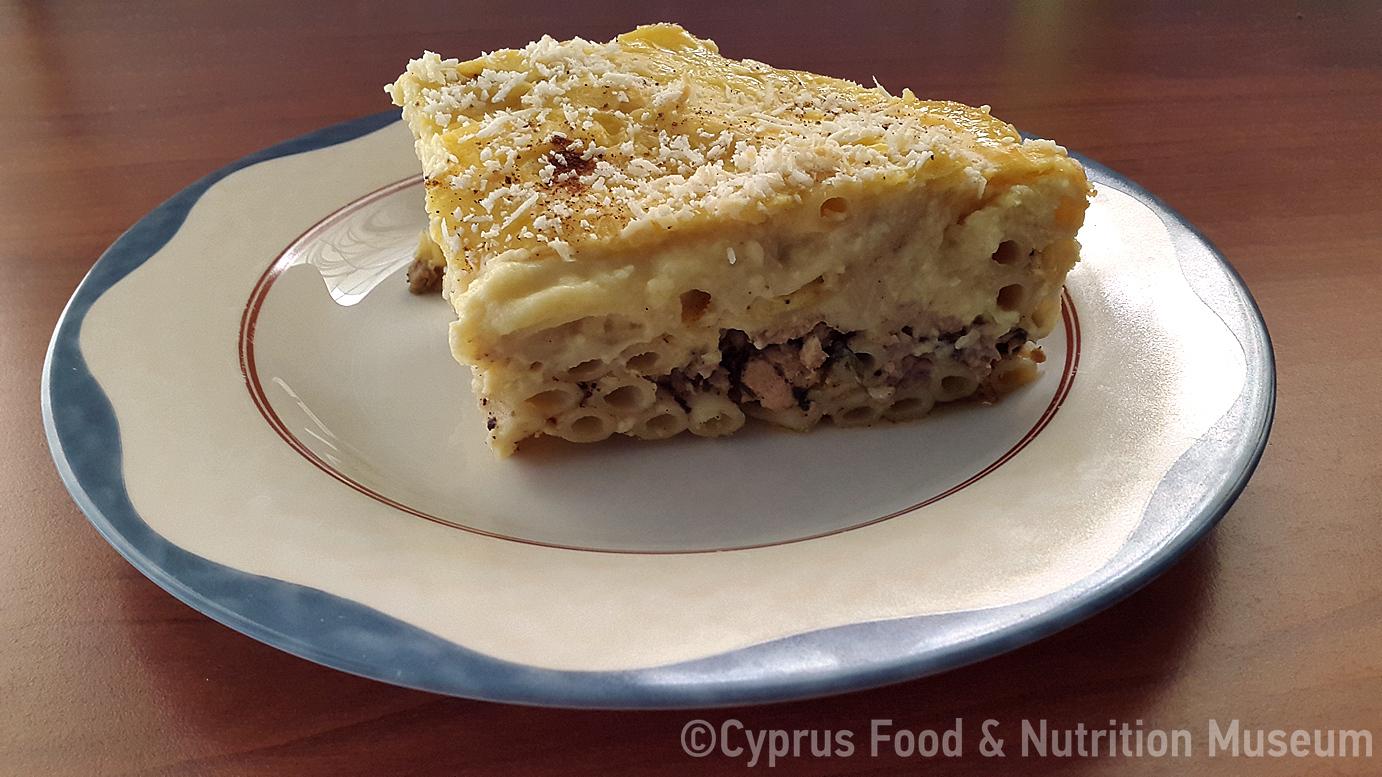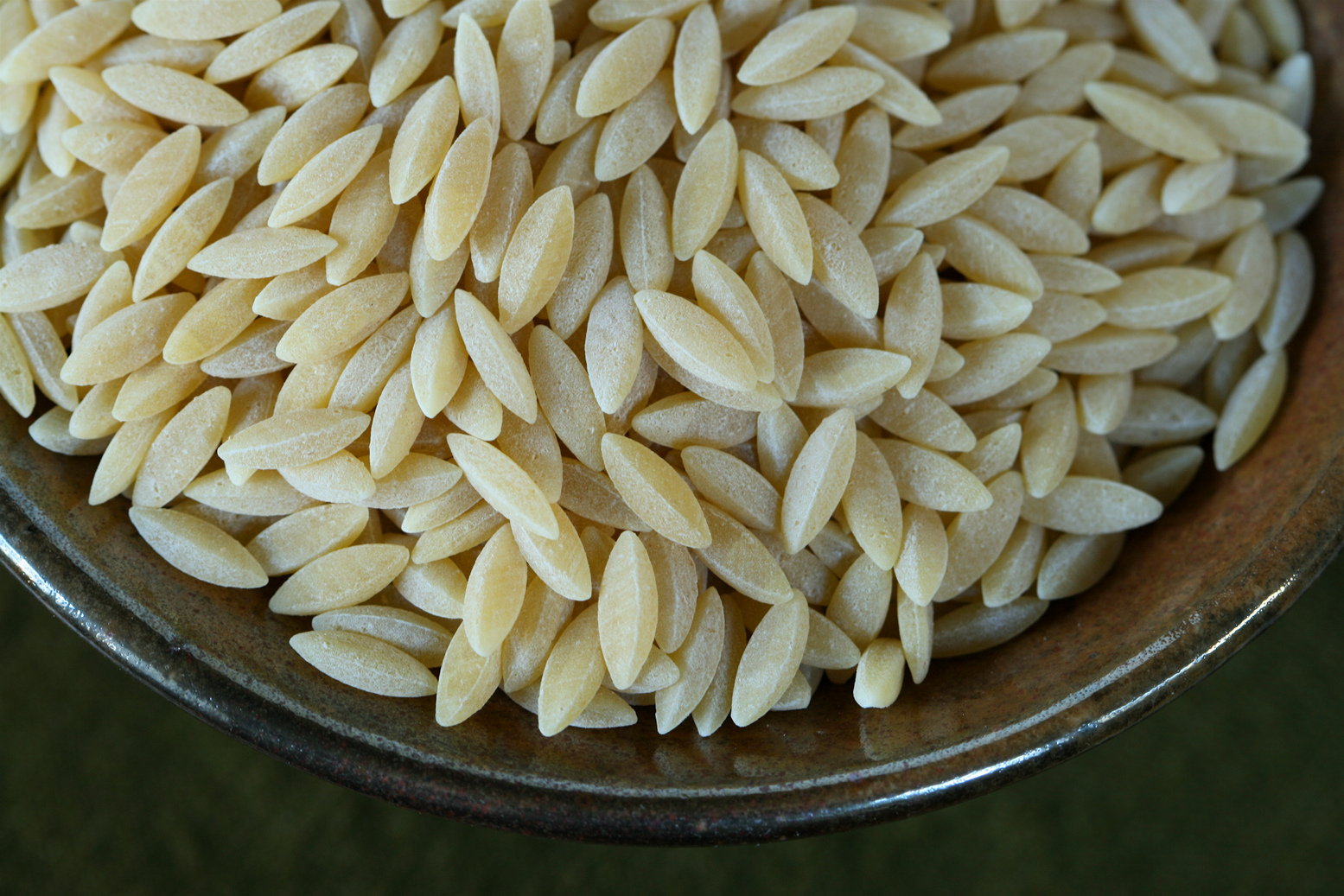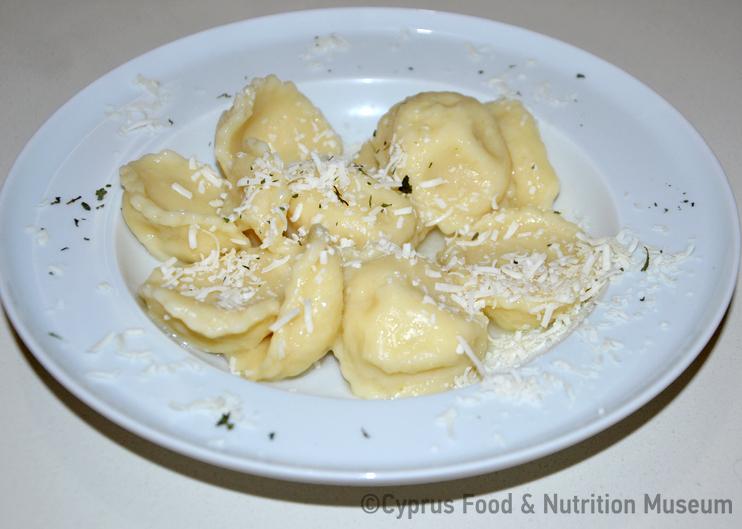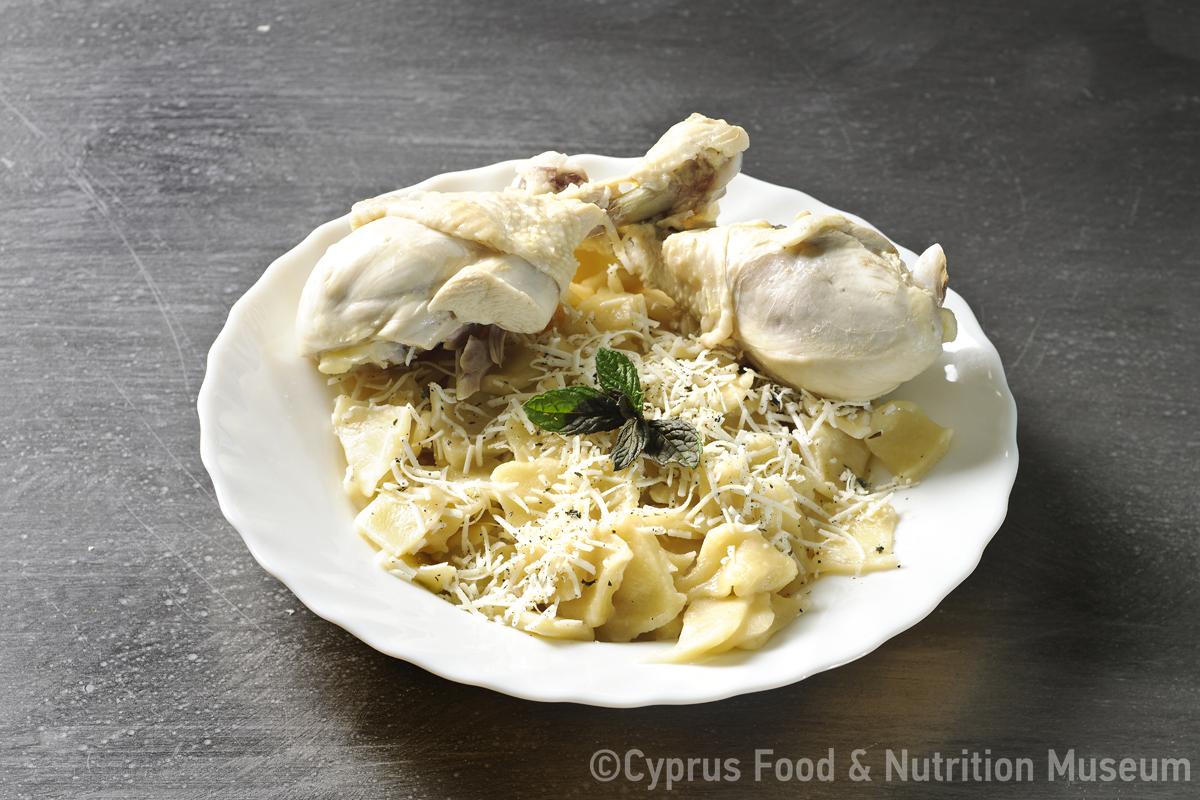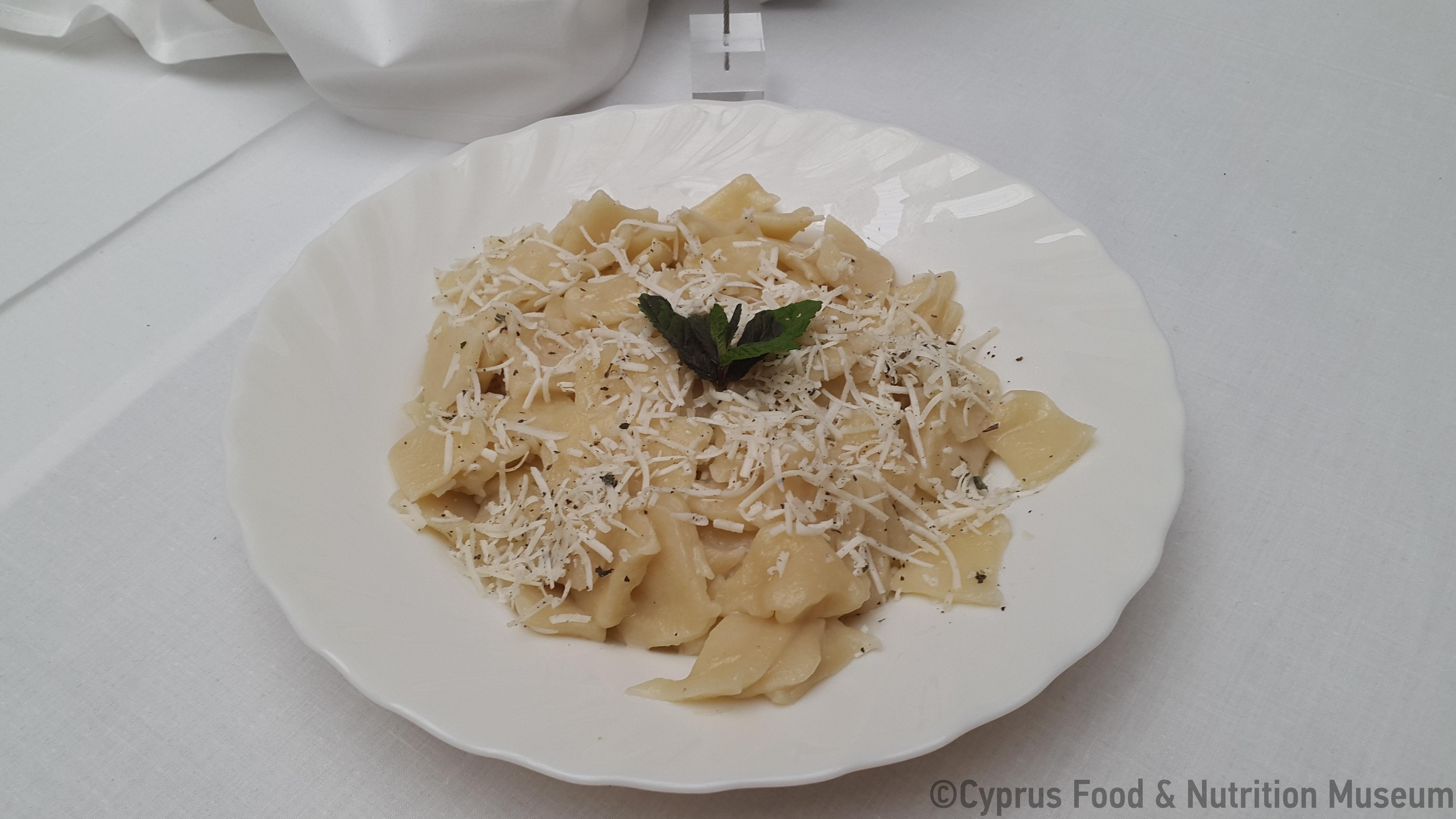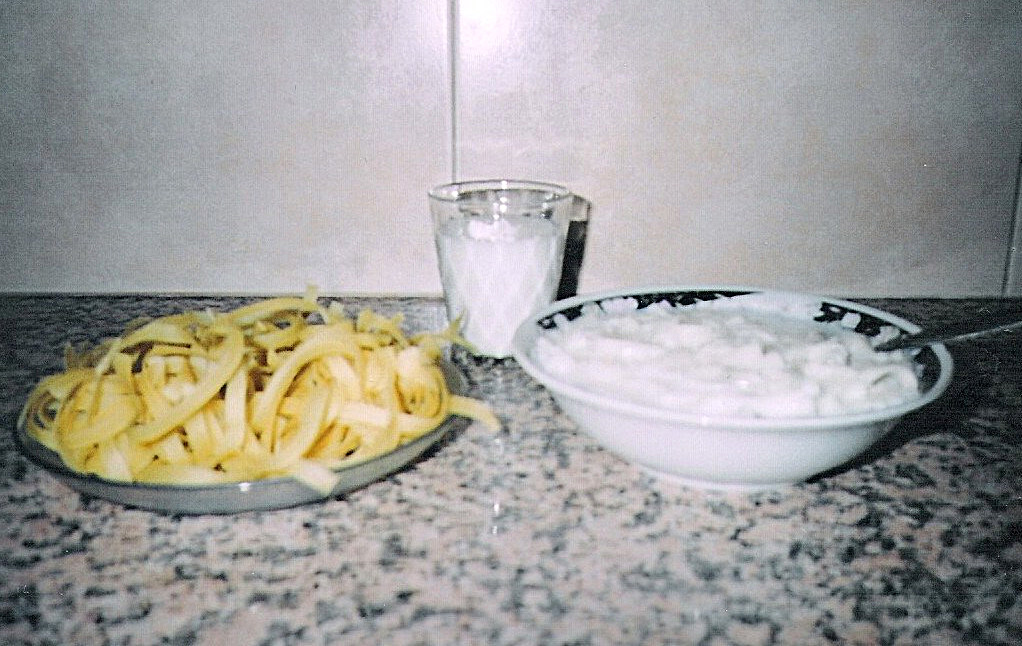Homemade macaroni using sklinitžin (a thin sprig of the rush plant).
Name - Origin
Homemade pasta (macaroni) with a hole in the middle.
They were also called makaronia tis smilas, smilotá or rovanáta (Kypri - Protopapa 2003, 262).
For the preparation of makaronia trypita, women would wrap the dough around sklinitžin (a thin sprig of the rush plant - Juncus Sp.), then rub them to make them thin and, after removing the rush, they would cut them into smaller pieces of about 5 cm in length. They were left to dry in the sun on tsestos (woven tray) (Kyprianou 1992, 69; Kypri - Protopapa 2003, 262).
Functional and symbolic role
Homemade pasta was made mostly during the summer months, during the harvest (Kyprianou 1992, 69). Usually, this process was carried out in the evenings during friendly or family gatherings of women (Prodromou 1982, 134). They used to boil the pasta in chicken broth and serve it with grated halloumi or anari and spearmint (Kythreotis 1978, 15). In the village of Peristeronopigi they were prepared with pigeons in tomato sauce, while in the village of Lysi, they were boiled in honey or carob syrup (Kypri - Protopapa 2003, 260).
Furthermore, during the harvest period, on Sundays and feast days, the workers would eat makaronia tripita for lunch, which were prepared by the employer's wife with the assistance of women workers. During these days, women workers would go to the employer's house and make the pasta so that the employer's wife could cook it on the following day. According to testimonies from Palaikythro, pasta was considered a formal dish by the workers, as it was clearly different than their everyday pilaf pourkouri dish (Kyprianou 1992, 69).
Makaronia trypita was a special dish which was also prepared for weddings. In many villages the pasta was boiled on Tuesday following the wedding, while in other villages it was boiled on Sunday, that is, on the day of the wedding. Sometimes, the pasta was made by the bride, sometimes by her mother and sometimes by the bride's girlfriends (Kypri - Protopapa 2003, 220-222).
Additional information and bibliography
Kythreotis I. (1978), «Κυπριακά Ζυμαρικά», Λαογραφική Κύπρος 8,22, 15-16.
Kypri I. - Protopapa K. A. (2003), Παραδοσιακά ζυμώματα της Κύπρου. Η χρήση και η σημασία τους στην εθιμική ζωή, Publications of the Centre for Scientific Research, XVIII, Nicosia, Nicosia.
Kyprianou P. Chr. (1992), «Λαογραφικά του Παλαίκυθρου», Λαογραφική Κύπρος 42 (supplement), 1-101.
Prodromou A. (1982), «Παρασκευάσματα από σιτάρι», Λαογραφική Κύπρος 12,32, 133-134.
Demetra Dimitriou, Argyro Xenophontos
